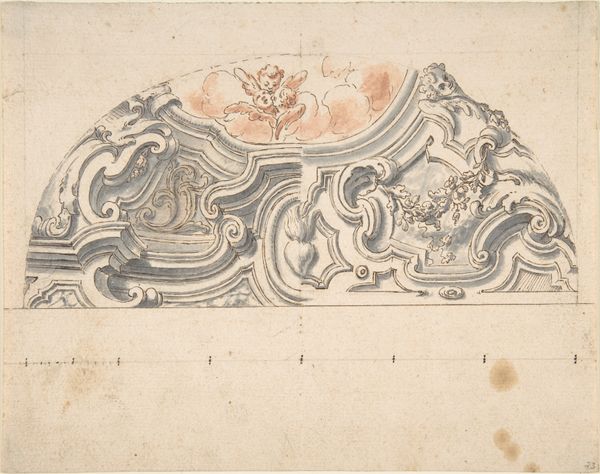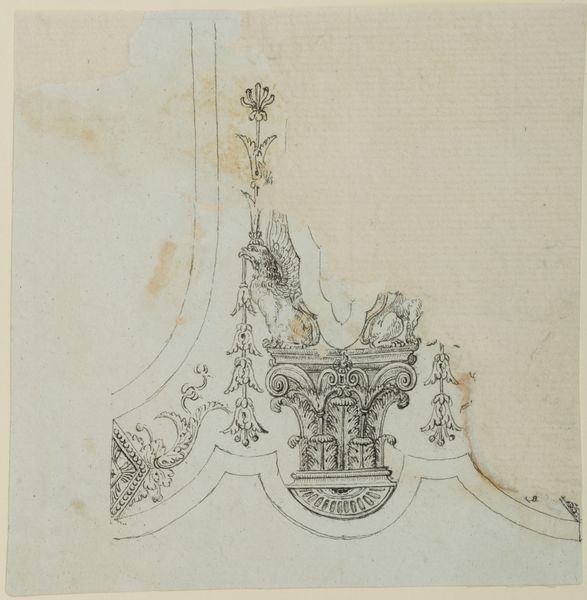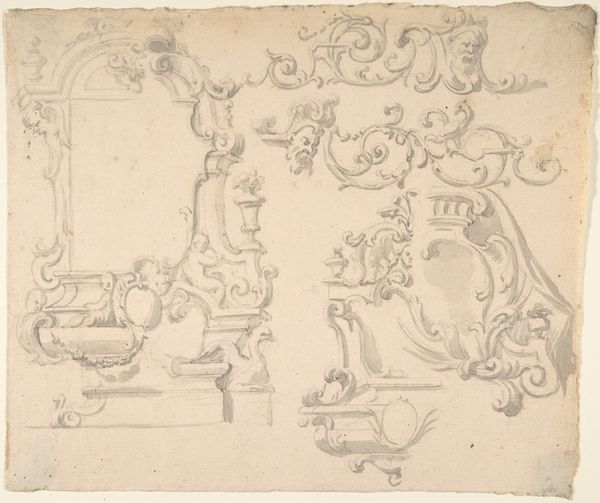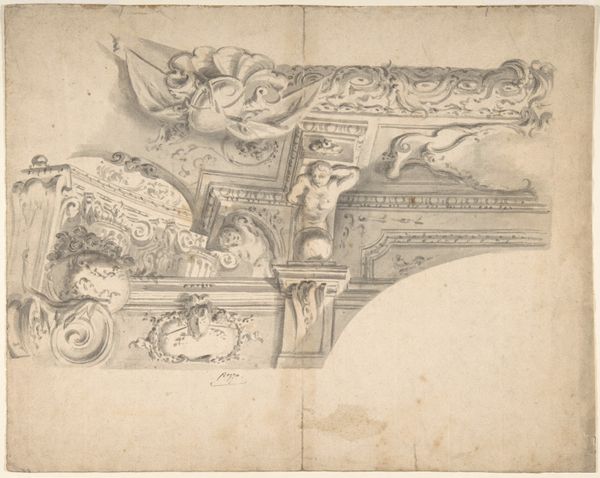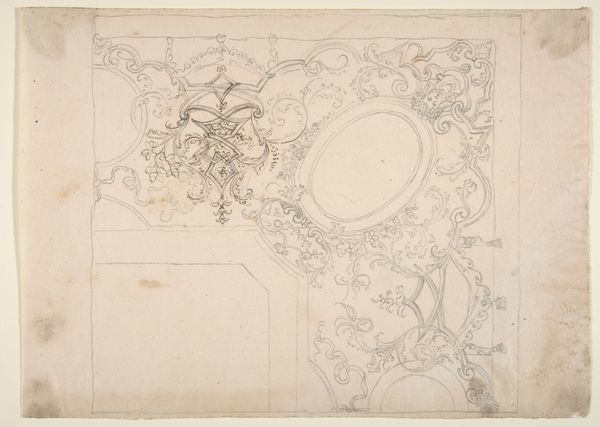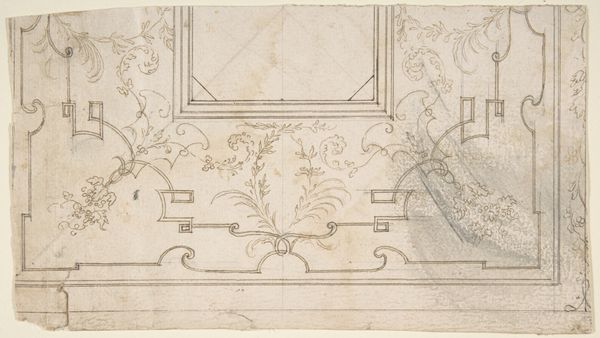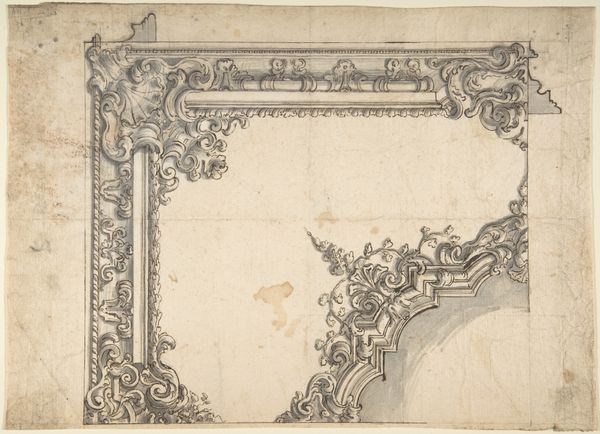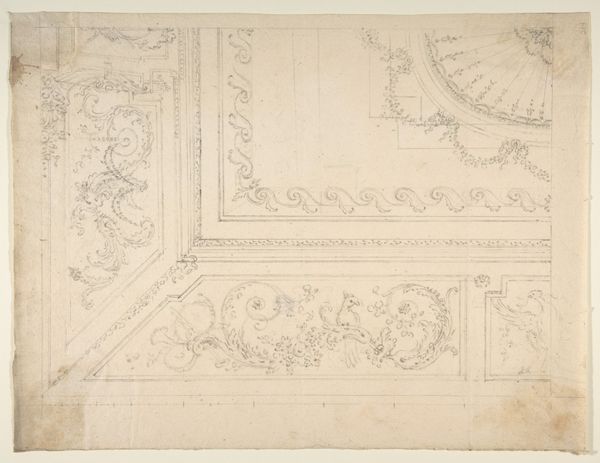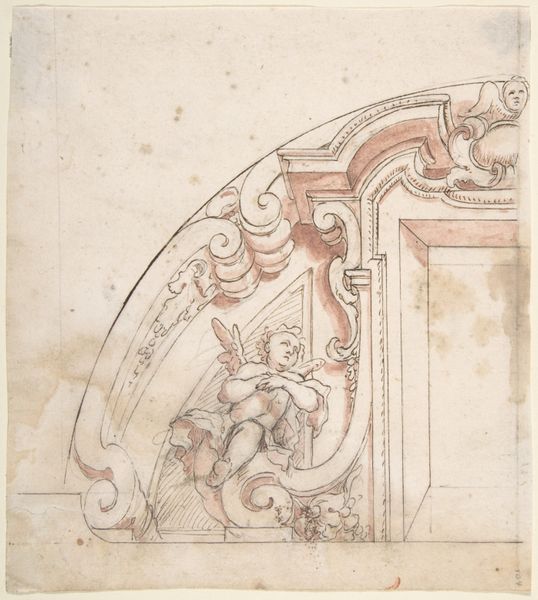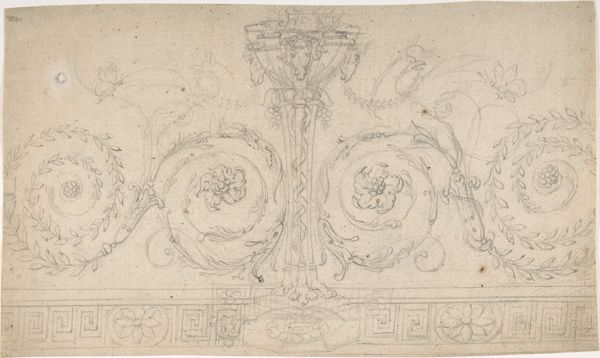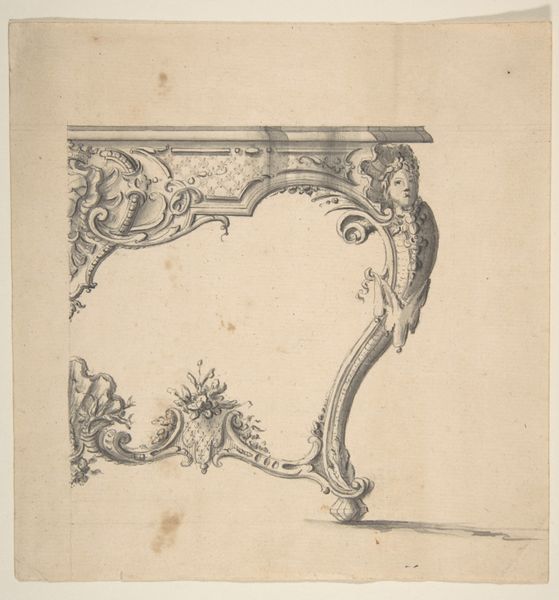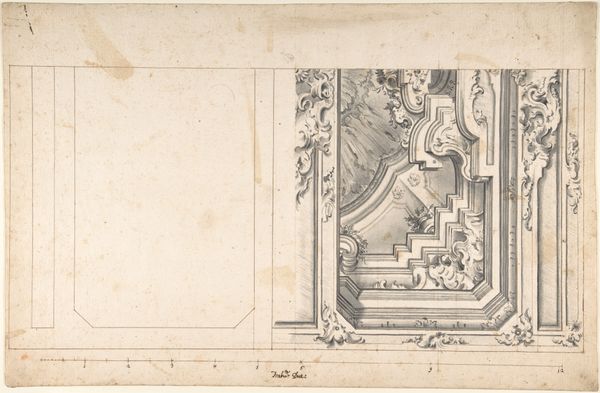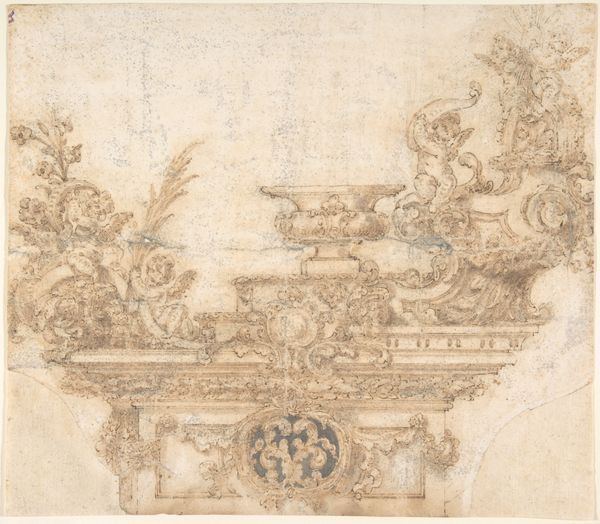
drawing, print, architecture
#
drawing
#
baroque
# print
#
geometric
#
academic-art
#
architecture
Dimensions: 9 5/8 x 9 9/16 in. (24.4 x 24.3 cm)
Copyright: Public Domain
Editor: So this drawing is titled "Design for the Cove of a Ceiling" and dates back to somewhere between 1700 and 1780. It's at the Met and made with print and drawing materials. It strikes me as a bit…unfinished. What do you see in this piece? Curator: Well, immediately, I'm thinking about power, class, and gender within the Baroque period. Architecture during this era was all about projecting dominance, and ceiling designs, like this one, were a key element. Who do you think would have been experiencing or benefitting from this display of grandeur? Editor: I suppose the elite, those with access to these buildings. The patrons? Curator: Exactly. Think about who designed it, who funded it, and who inhabited those spaces. These spaces were very often sites where gendered, raced, and class-based hierarchies were reinforced. These weren’t simply aesthetic choices; they were statements of power. Look closely – how do you read those elaborate swirls in relation to systems of control? Editor: Hmm, it's interesting to think about something beautiful as also potentially oppressive. Curator: Precisely. It forces us to confront how artistic expression is inextricably linked to social structures, for better or for worse. So, looking at the geometric structure against the free-flowing shapes, how do we analyze it? What meaning can you derive from its presence within the larger context of wealth, opulence, and its effect on society? Editor: It provides more evidence of societal inequality and the need to examine what visual cues throughout art history inform cultural meaning. It definitely encourages questioning. Curator: And that's exactly the point, isn't it? Art as a catalyst for critical thinking.
Comments
No comments
Be the first to comment and join the conversation on the ultimate creative platform.
